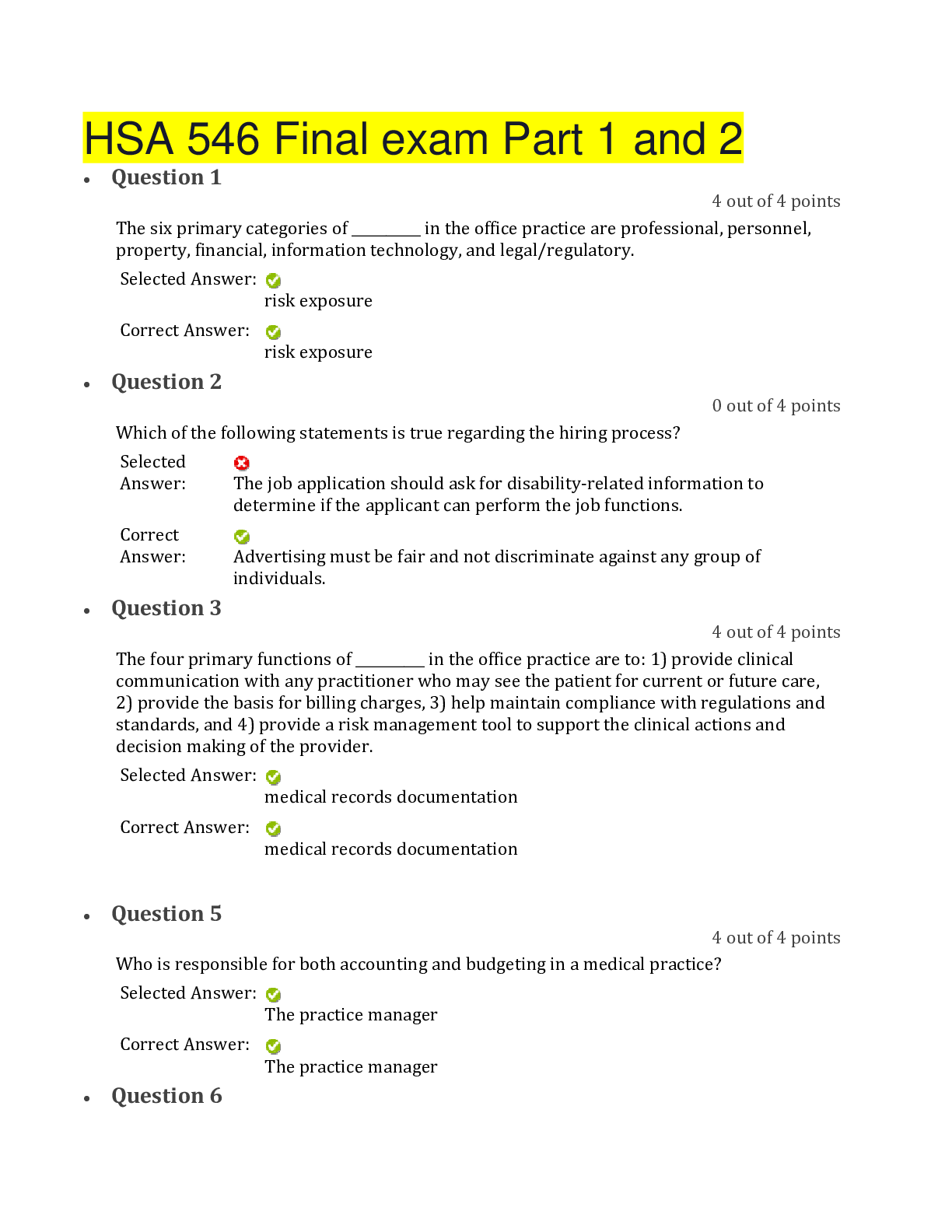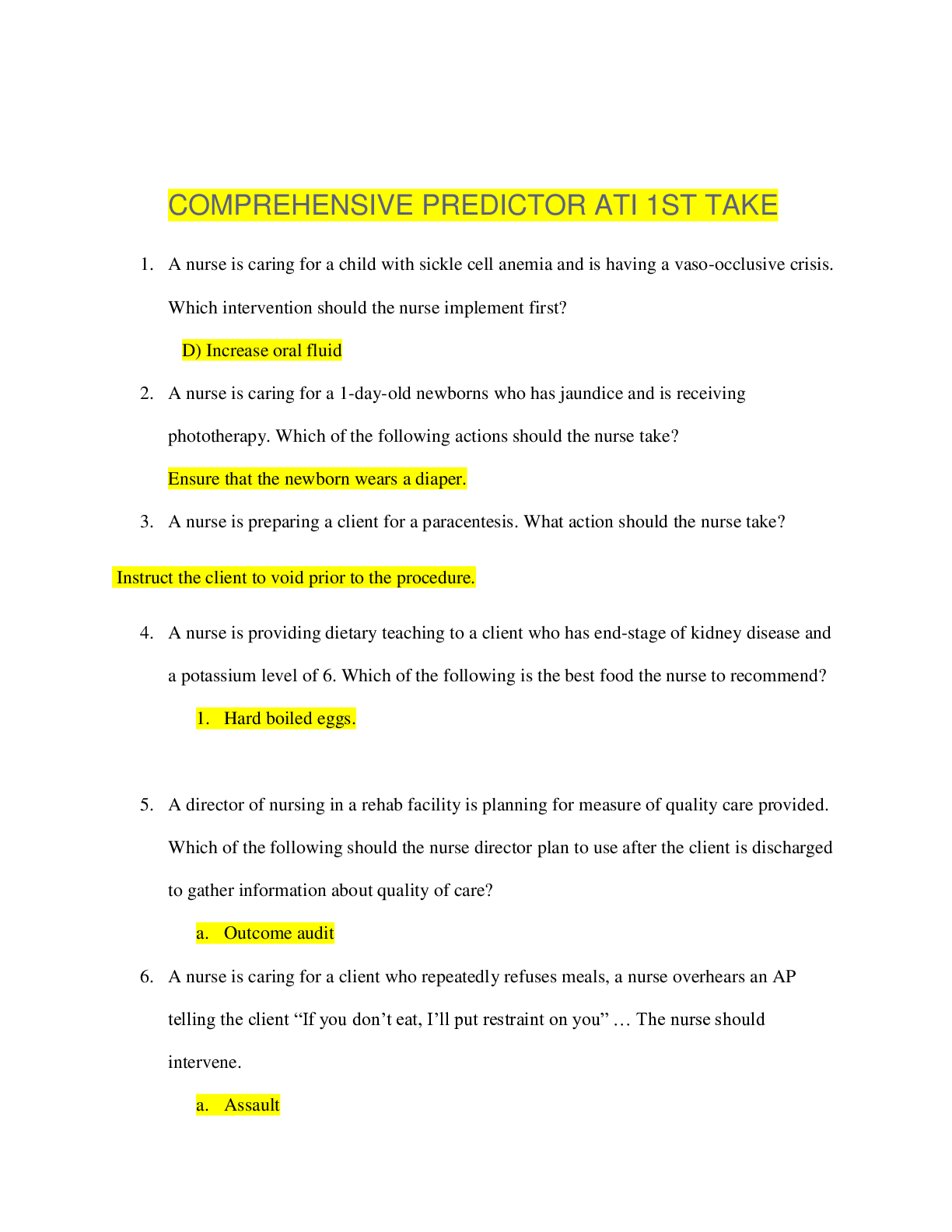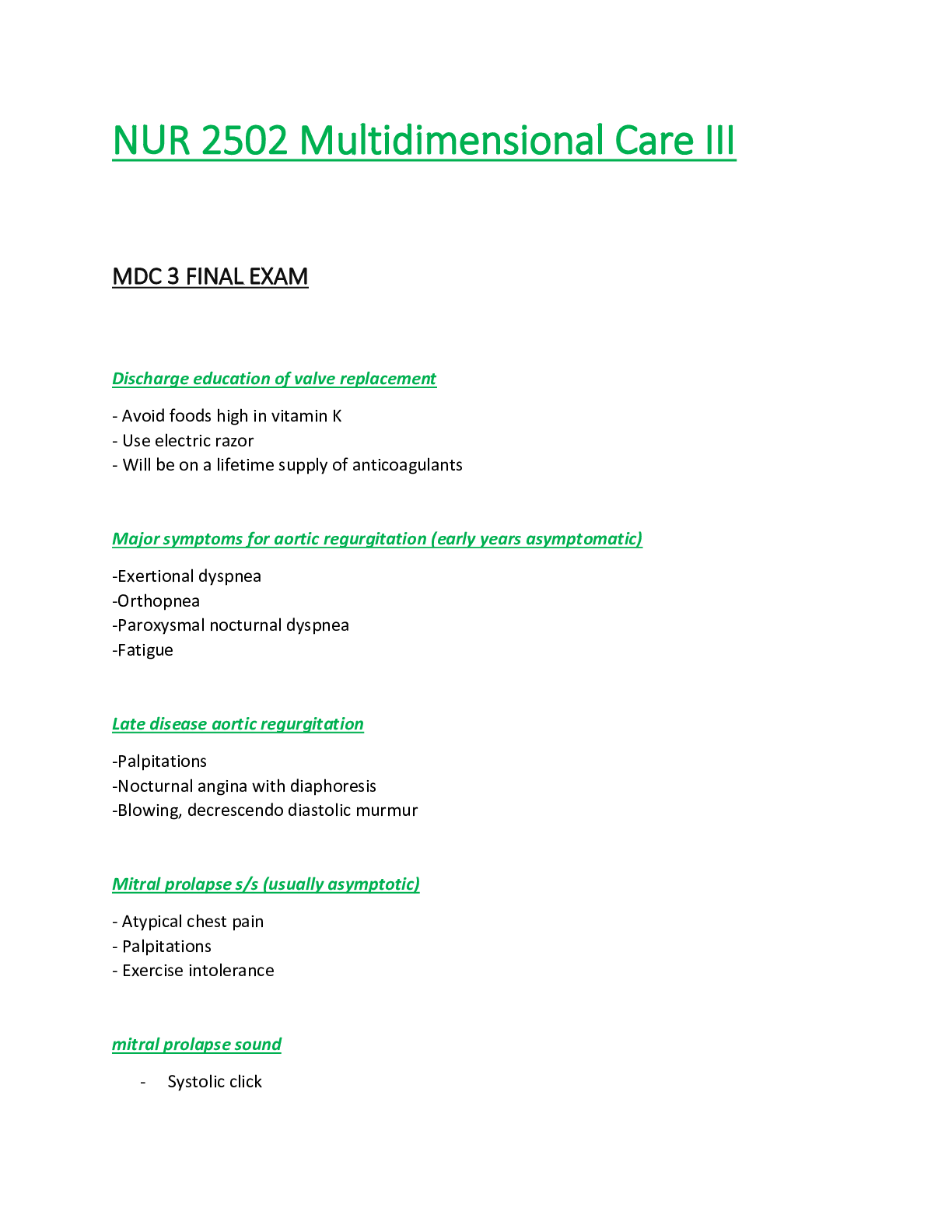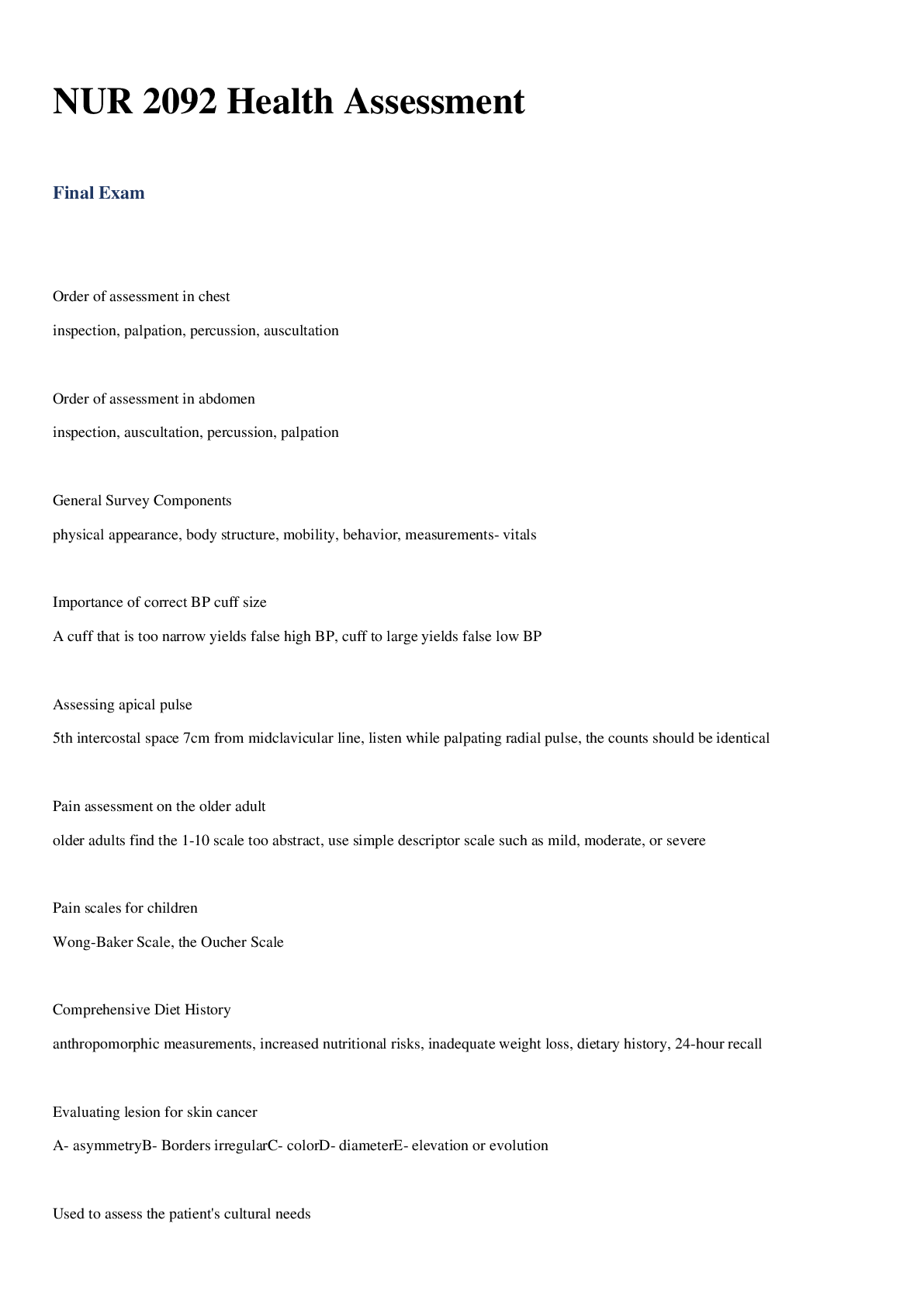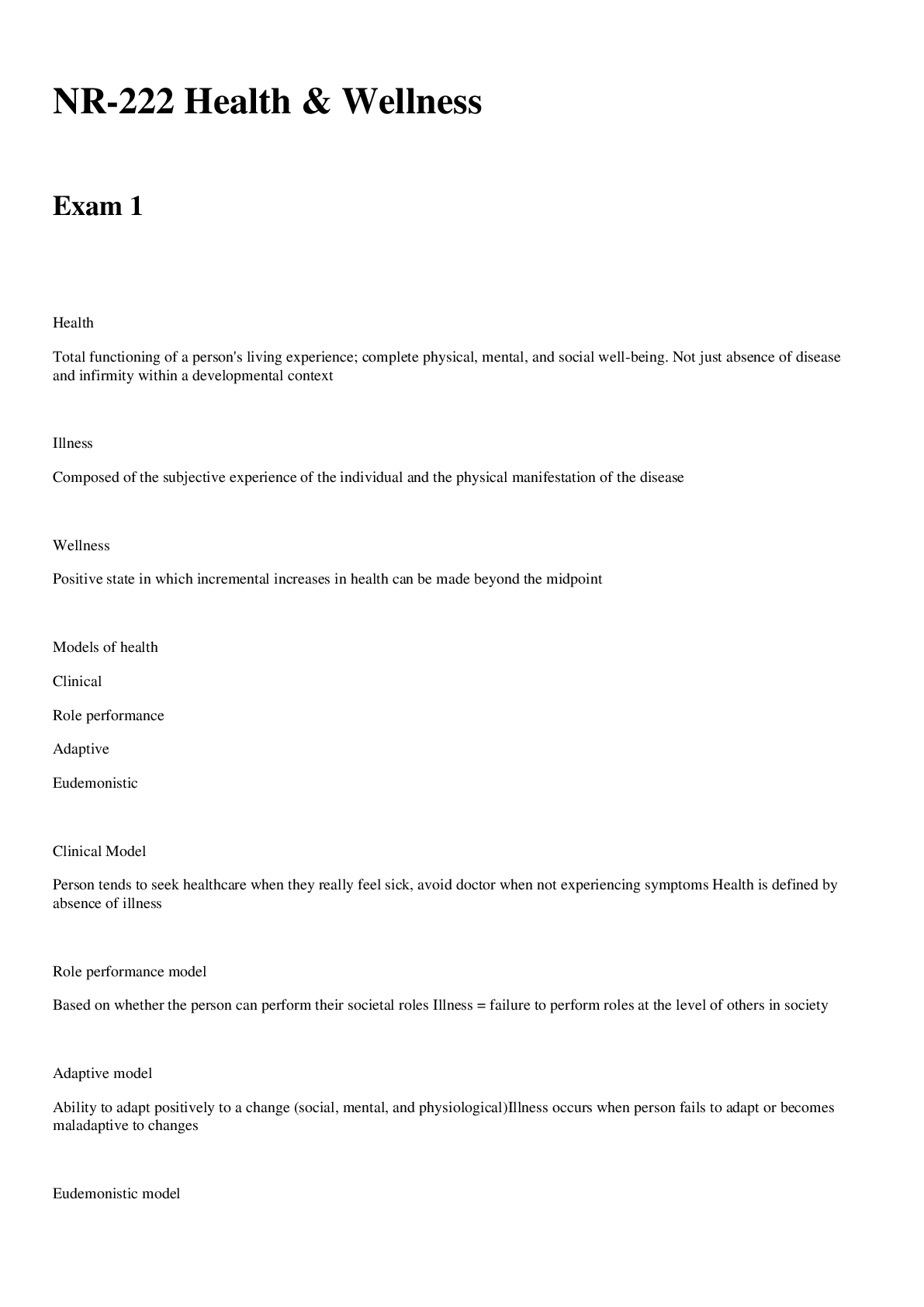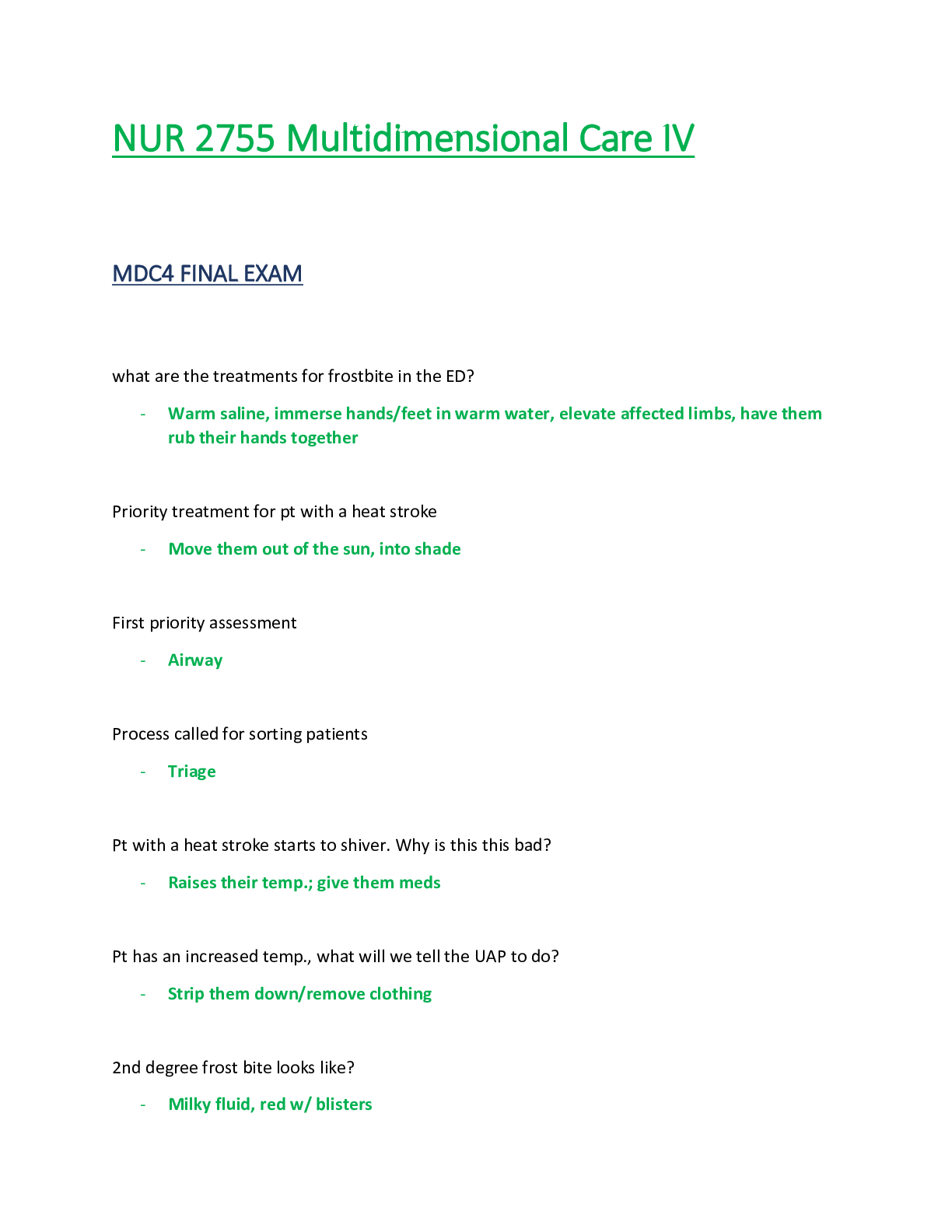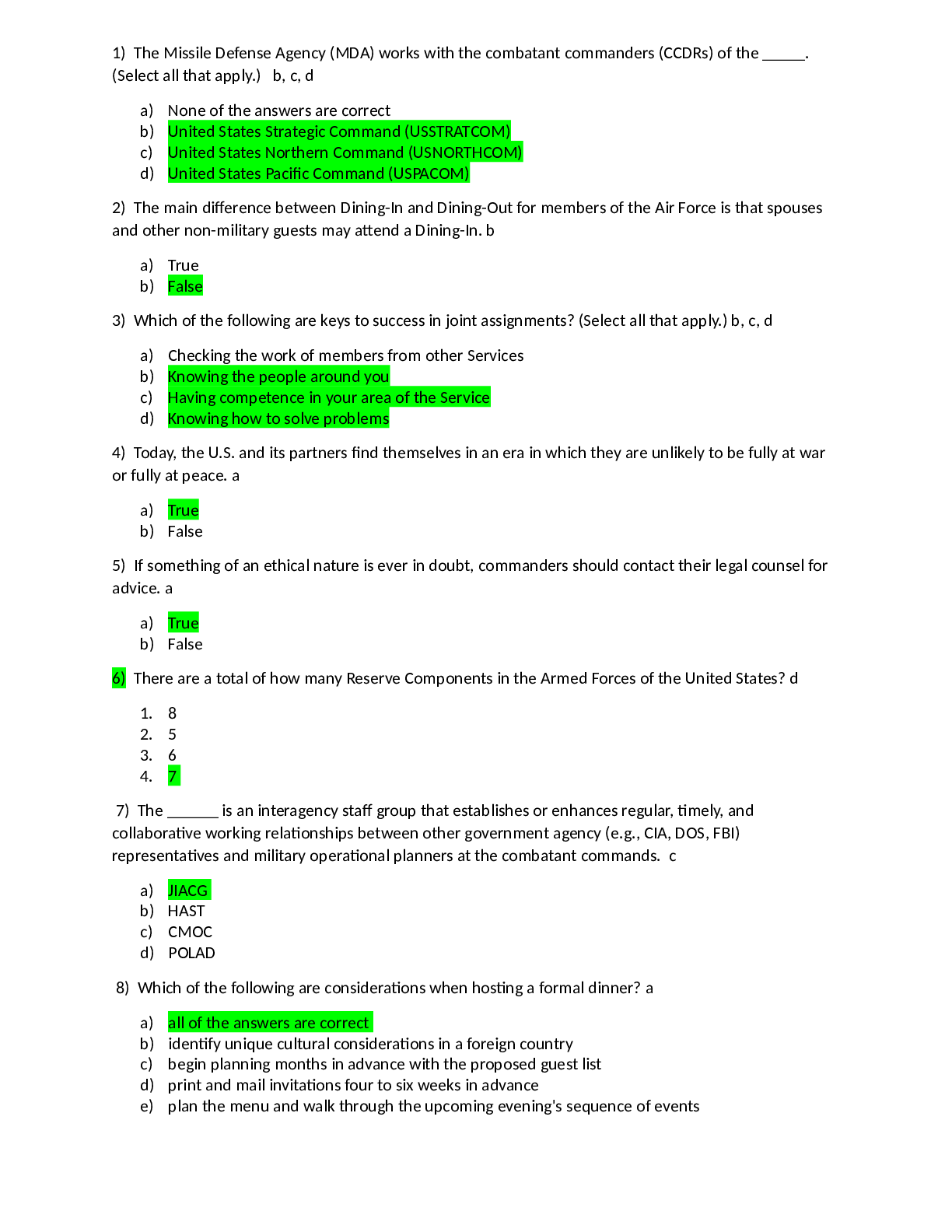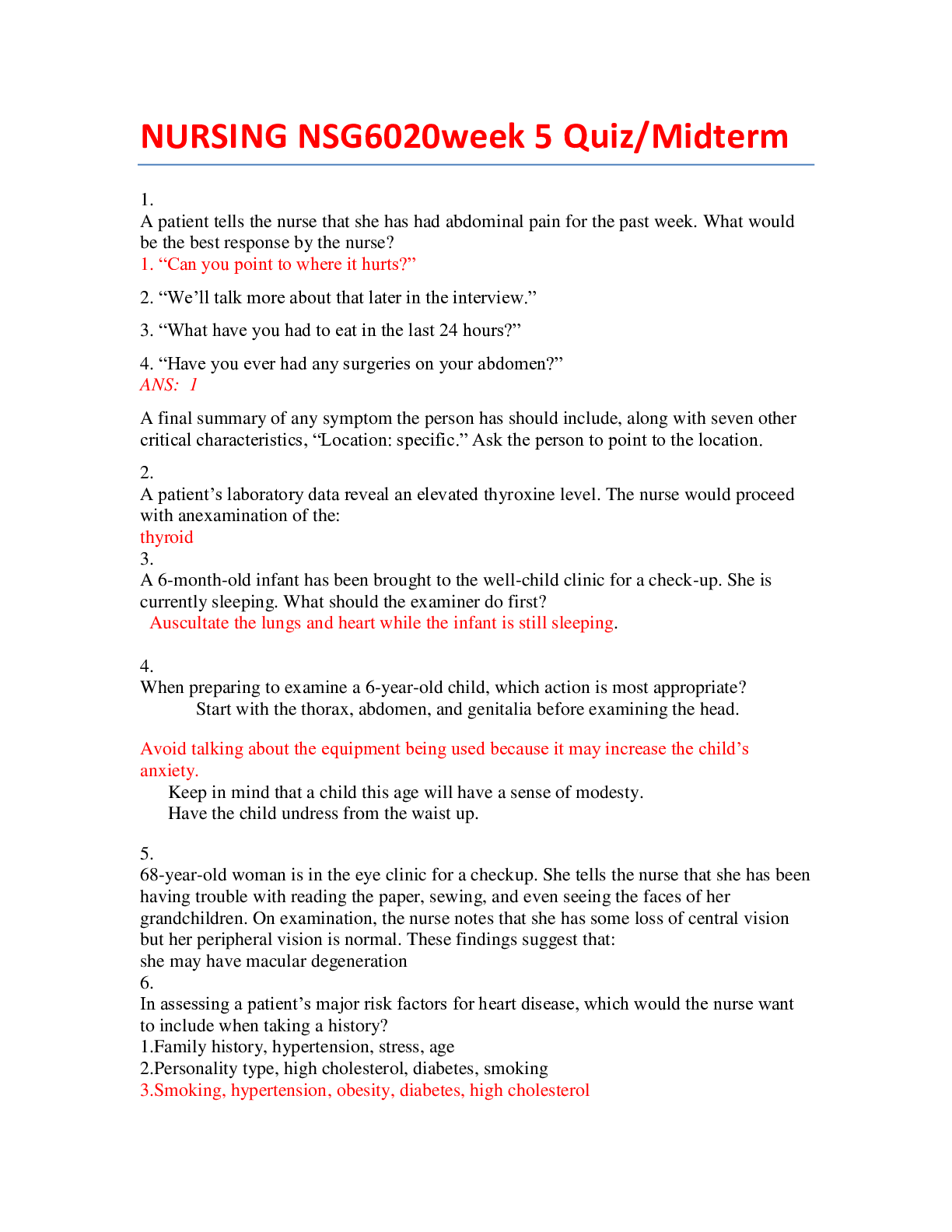Health Care > EXAM > ATI RN Nursing Care of Children Proctored Exam 2021 ATI RN Nursing Care of Children Proctored (All)
ATI RN Nursing Care of Children Proctored Exam 2021 ATI RN Nursing Care of Children Proctored Exam 2021 Stuv ATI RN Nursing Care of Children Proctored Exam 2021 ATI Nursing Care of Children Proctored Exam (CHECK THE LAST PAGE FOR MULTIPLE VERSIONS OF THE EXAM AND OTHER ATI EXAMS) 1) A nurse is an emergency department is caring for a school-age child who has epiglottitis. Which of the following actions should the nurse take? a) Obtain a throat culture from the child. b) Monitor the child's oxygen saturation. c) Put a warm mist humidifier in the child's room. d) Place the child in the supine position 2) A nurse in an emergency department is caring for a school-age child who has sustained a minor superficial burn from fireworks on their forearm. Which of the following actions should the nurse take? a) Administer the tetanus toxoid vaccine if more than 1 year since the prior dose. b) Apply an antimicrobial ointment to the affected area. c) Leave the burn area open to air. d) Place an ice pack on the affected area. 3) A nurse in a providers office is caring for a school-age child who has varicella. The parents asks the nurse when their child will no longer be contagious. Which of the following responses should the nurse make? a) "When your child no longer has an increased temperature." b) "Three days after you first noticed the rash appear on your child." c) "When your child's lesions are crusted, usually 6 days after they appear." d) "Two to three weeks, when your child's lesions completely disappear." 4) A nurse is providing discharge teaching to the parent of a school-age child who has moderate persistant asthma. Which of the following instructions should the nurse include? a) "You should give your child their salmeterol inhaler every 4 hours when they are having an acute episode of wheezing." b) "You should monitor your child's weight weekly while they are receiving inhaled corticosteroid therapy." c) "Pulmonary function tests will be performed every 12 to 24 months to evaluate how your child is responding to therapy." d) "When using the peak expiratory flow meter, record your child's average of three readings." 5) A nurse is admitting an infant who has intussusception. Which of the following findings should the nurse expect? (Select all that apply.) a) Steatorrhea b) Vomiting c) Lethargy d) Constipation e) Weight gain 6) A nurse is reviewing the laboratory results of a school-age child who is 1 week postoperative following an open fracture repair. Which of the following findings should the nurse identify as an indication of a potential complication? a) Erythrocyte sedimentation rate 18 mm/hr b) WBC count 6,200/mm3 c) C-reactive protein 1.4 mg/L d) RBC count 4.7 million/mm3 7) A nurse is providing discharge teaching to the parents of a 3-month old infant following a cheiloplasty. Which of the following instructions should the nurse include? a) "Clean your baby's sutures daily with a mixture of chlorhexidine and water." b) "Expect your baby to swallow more than usual over the next few days." c) "Inspect your baby's tongue for white patches using a tongue depressor every 8 hours." d) "Apply a thin layer of antibiotic ointment on your baby's suture line daily for the next 3 days." 8) A nurse is discussion organ donation with the parents
Document Content and Description Below
1) of a school-age child who has sustained brain death due to a bicycle crash. Which of the following actions should the nurse take first? a) Inform the parents that written consent is required prior... to organ donation. b) Provide written information to the parents about organ donation. c) Ask the provider to explain misconceptions of organ donation to the parents. d) Explore the parents' feelings and wishes regarding organ donation. 2) A nurse is caring for a 1-month-old infant who is breastfeeding and requires a heel stick. Which of the following actions should the nurse take to minimize the infants pain? a) Use a manual lancet to obtain the heel blood sample. b) Apply an ice pack to the infant's heel prior to obtaining the sample. c) Allow the mother to breastfeed while the sample is being obtained. d) Apply a topical lidocaine cream prior to obtaining the sample. 3) 4) A nurse is planning care for a newly admitted school-age child who has generalized seizure disorder. Which of the following interventions should the nurse plan to include? a) Ensure that a padded tongue blade is at the child's bedside. b) Allow the child to play video games on a tablet computer. c) Allow the child to take a tub bath independently. d) Ensure the oxygen source is functioning in the child's room. 5) A nurse is receiving change-of-shift report for four children. Which of the following children should the nurse assess first? a) A toddler who has a concussion and an episode of forceful vomiting b) An adolescent who has infective endocarditis and reports having a headache c) An adolescent who was placed into halo traction 1 hr ago and reports pain as 6 on a scale of 0 to 10 d) A school-age child who has acute glomerulonephritis and brown-colored urine 6) A nurse is providing dietary teaching to the guardian of a school-age child who has cystic fibrosis. Which of the following statements should the nurse make? a) "You should offer your child high-protein meals and snacks throughout the day." b) "You should decrease your child's dietary fat intake to less than 10% of their caloric intake." c) "You should restrict your child's calorie intake to 1,200 per day." d) "You should give your child a multivitamin once weekly." 7) A nurse is providing discharge teaching to the guardians of a toddler who had lower leg cast applied 24 hr ago. The nurse should instruct the guardians to report which of the following finding to the provider? a) Capillary refill time less than 2 seconds b) Restricted ability to move the toes c) Swelling of the casted foot when the leg is dependent d) Pedal pulse +3 bilateral 8) A nurse in an emergency department is auscultating the lungs of an adolescent who is experiencing dyspnea. The nurse should identify the sound as which of the following? a) Wheezes b) Crackles c) Pleural friction rub d) Rhonchi 9) A nurse is caring for a preschooler who has congestive heart failure. The nurse observes wide QRS complexes and peaked T waves on the cardiac monitor. Which of the following prescriptions should the nurse clarify with the provider? a) Furosemide b) Captopril c) Regular insulin d) Potas [Show More]
Last updated: 1 year ago
Preview 1 out of 9 pages
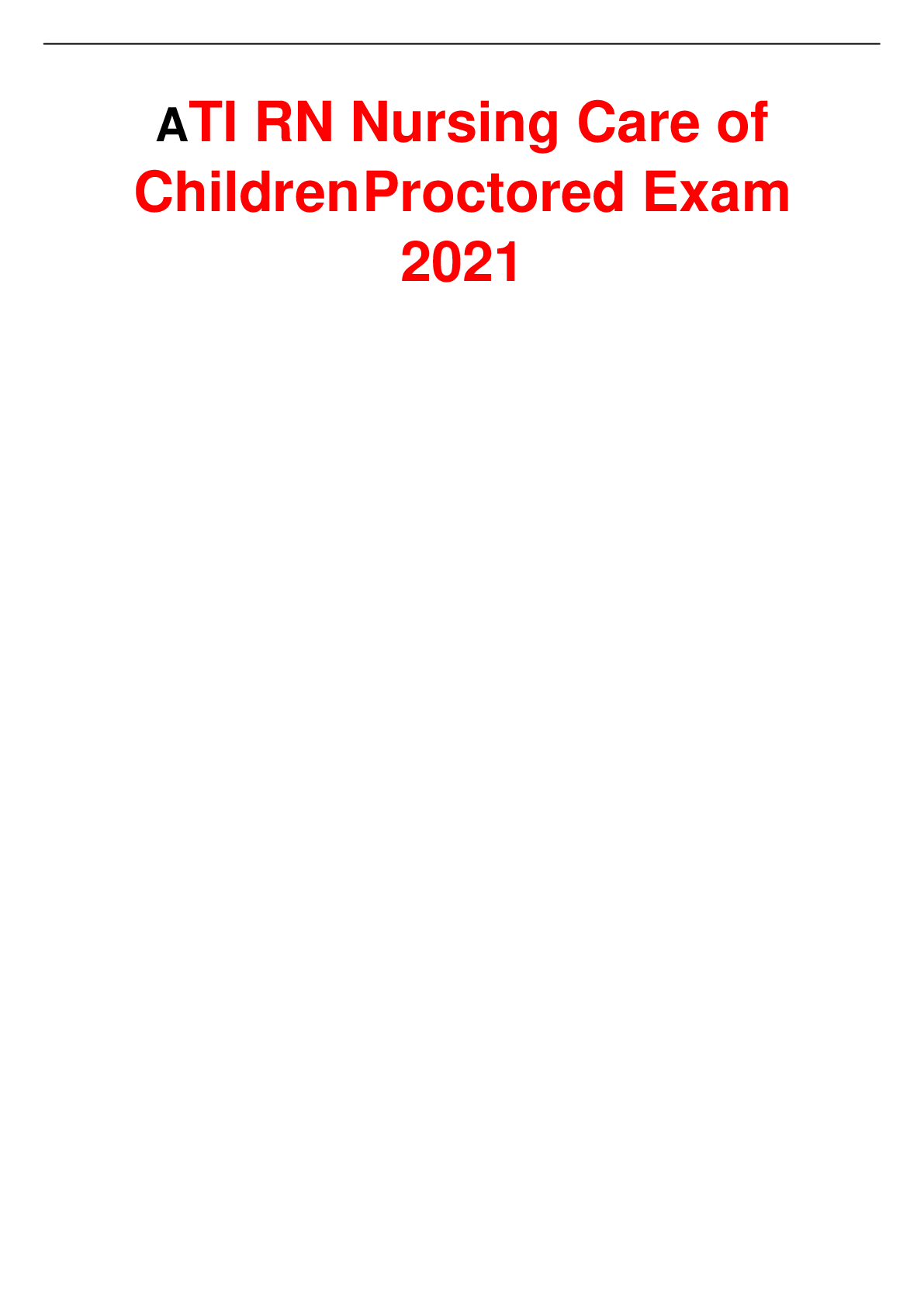
Reviews( 0 )
Document information
Connected school, study & course
About the document
Uploaded On
Aug 10, 2022
Number of pages
9
Written in
Additional information
This document has been written for:
Uploaded
Aug 10, 2022
Downloads
0
Views
66

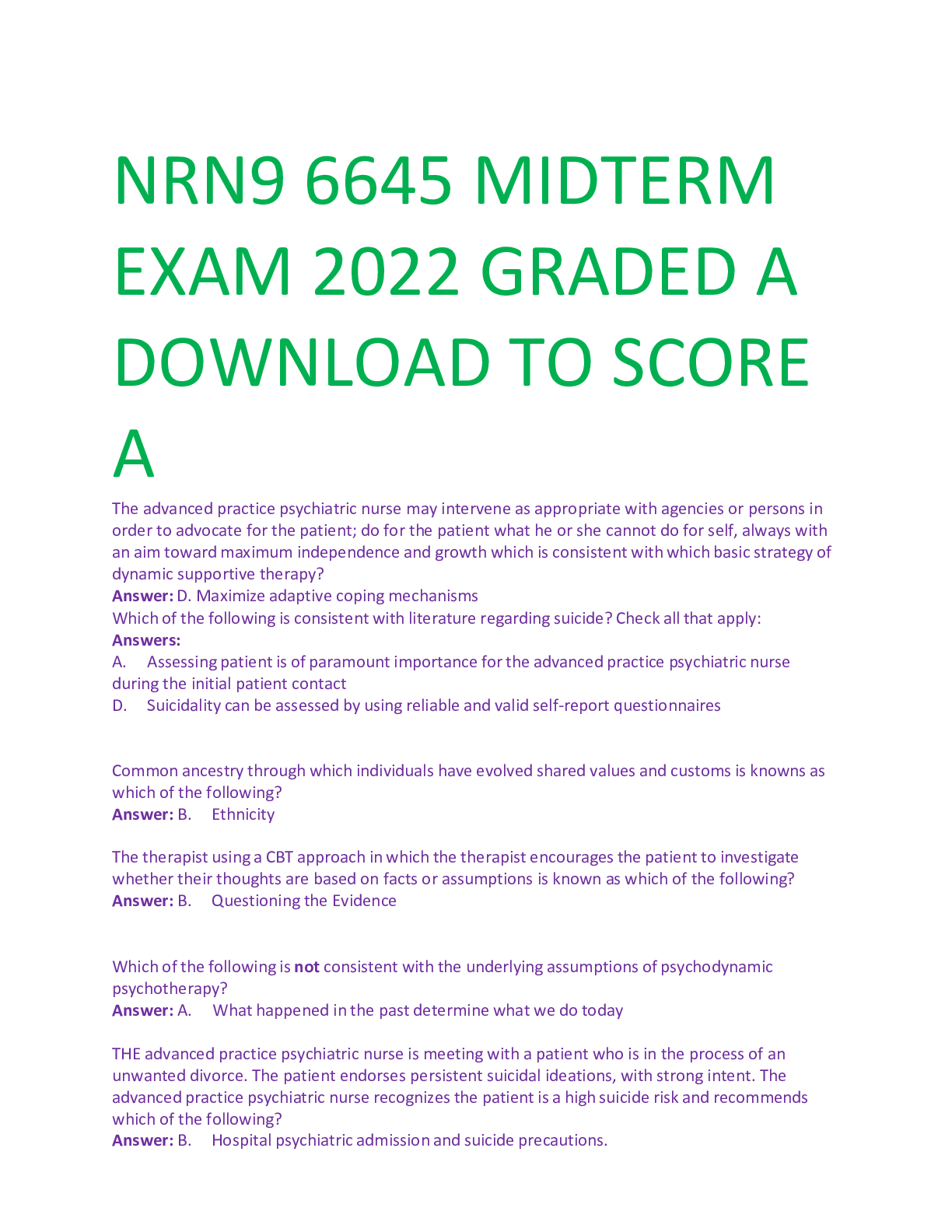
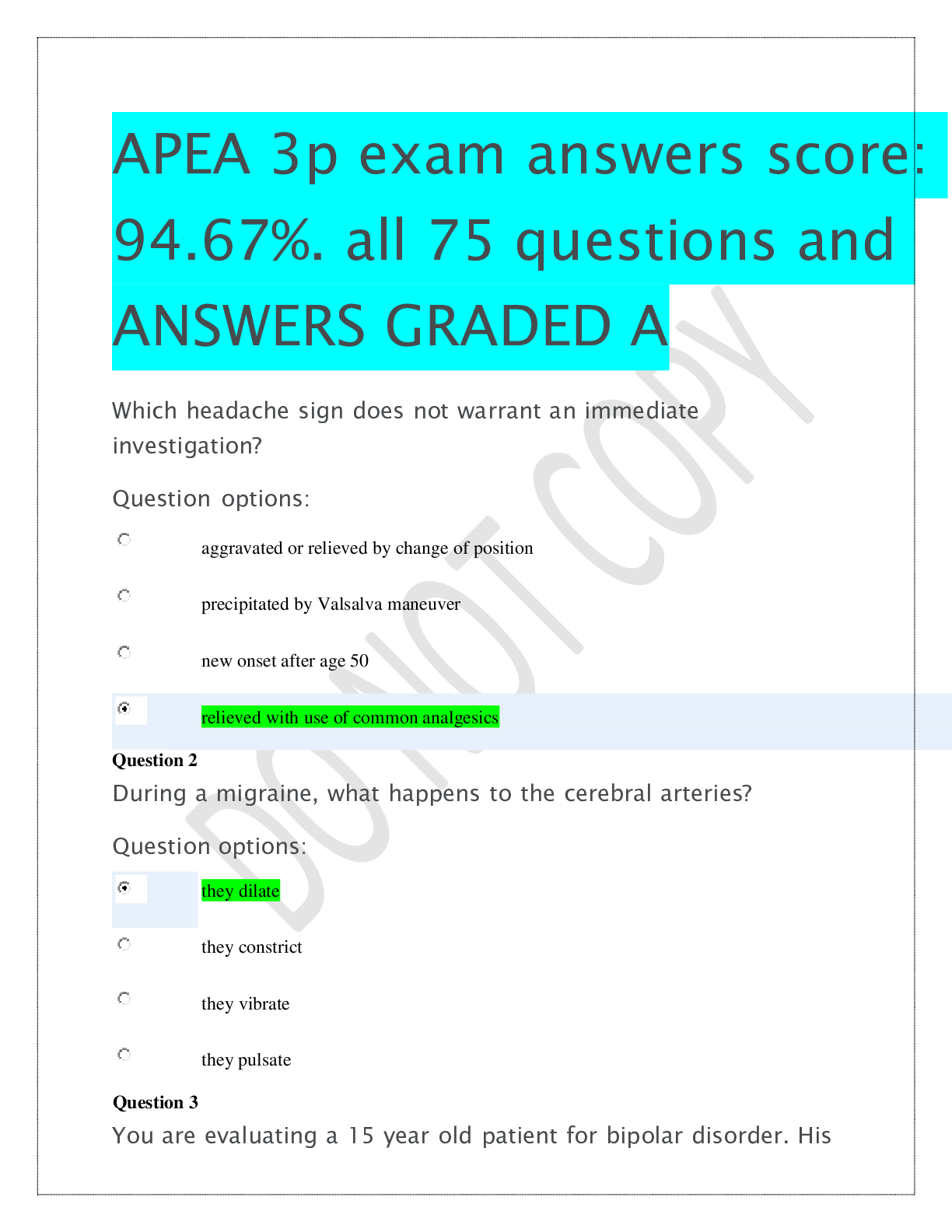
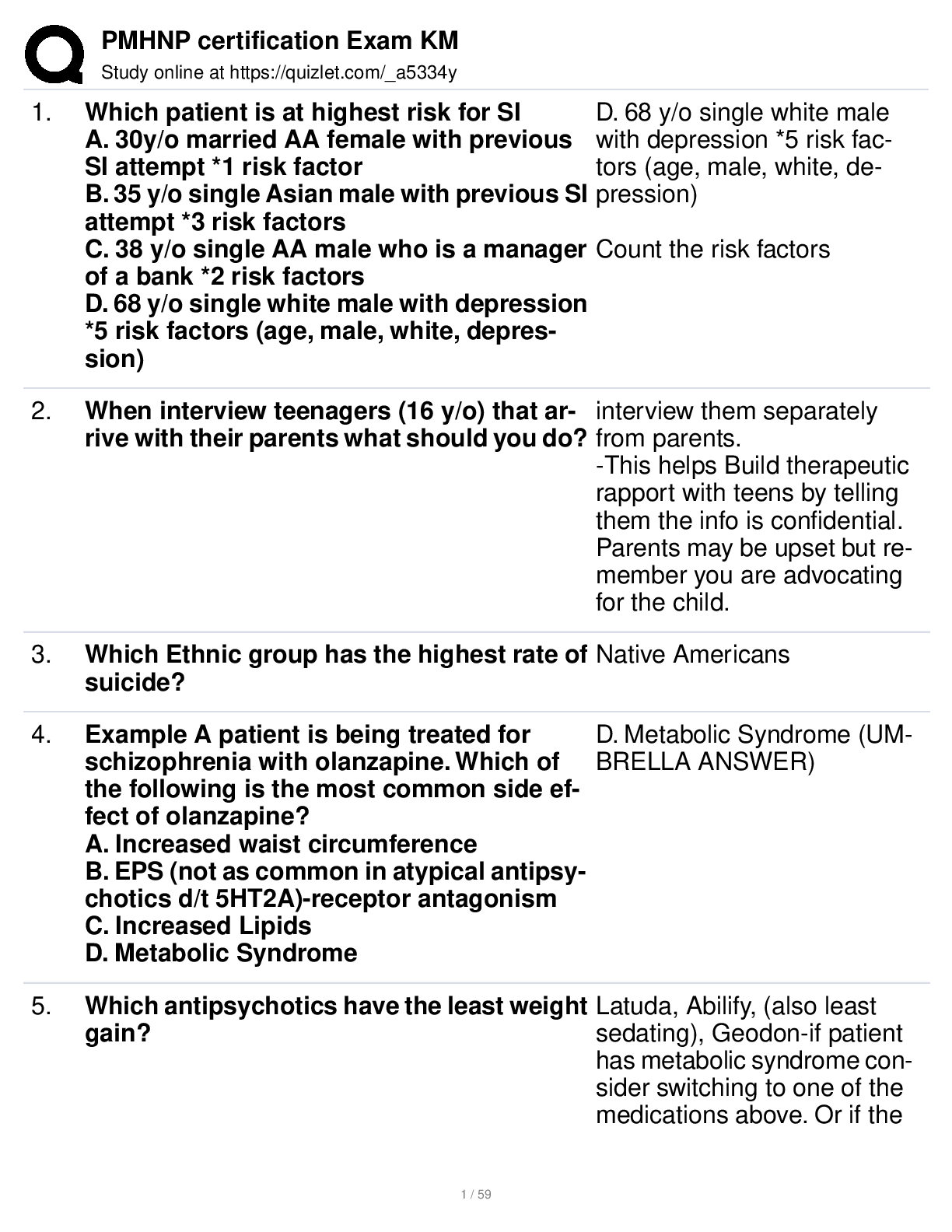
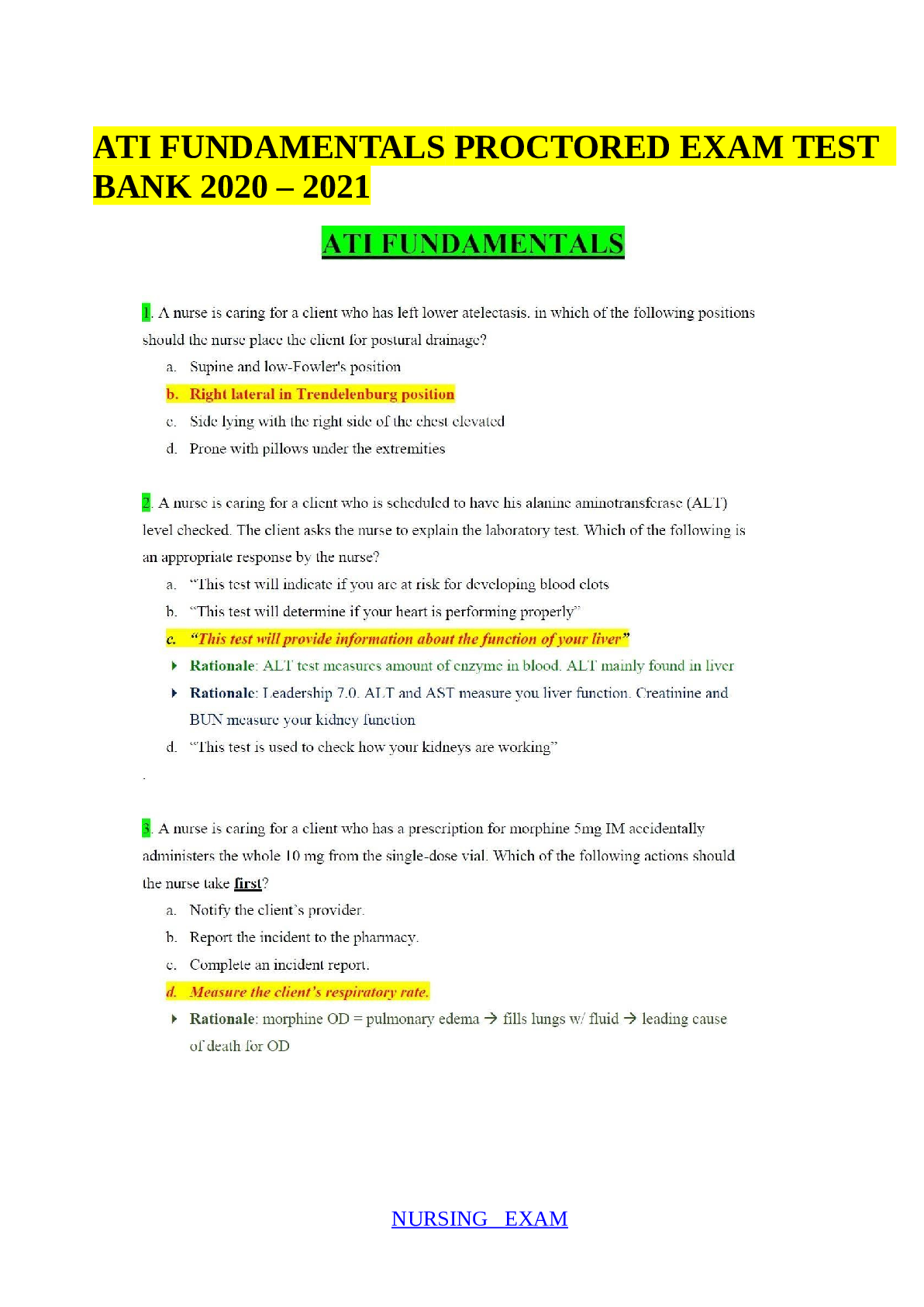
.png)
.png)

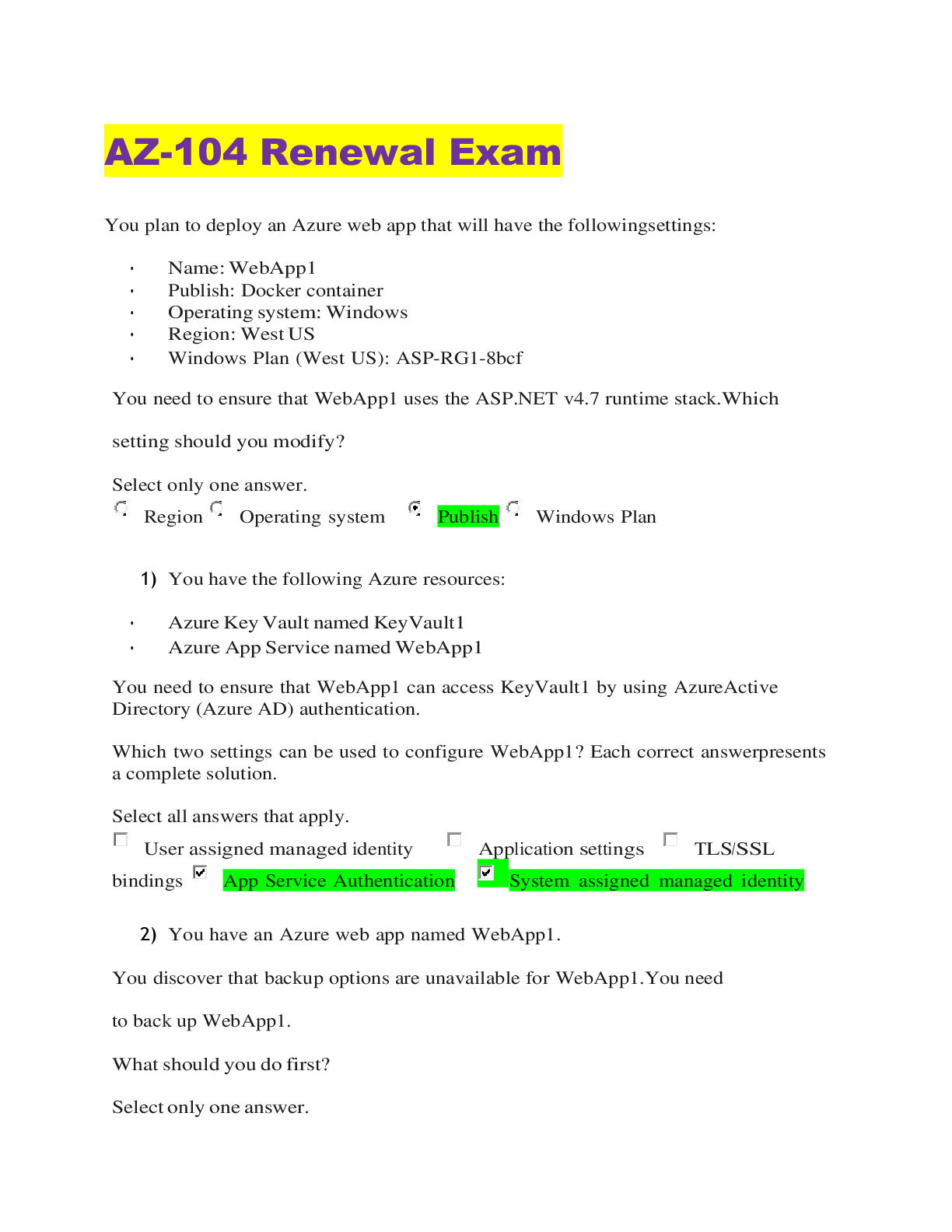

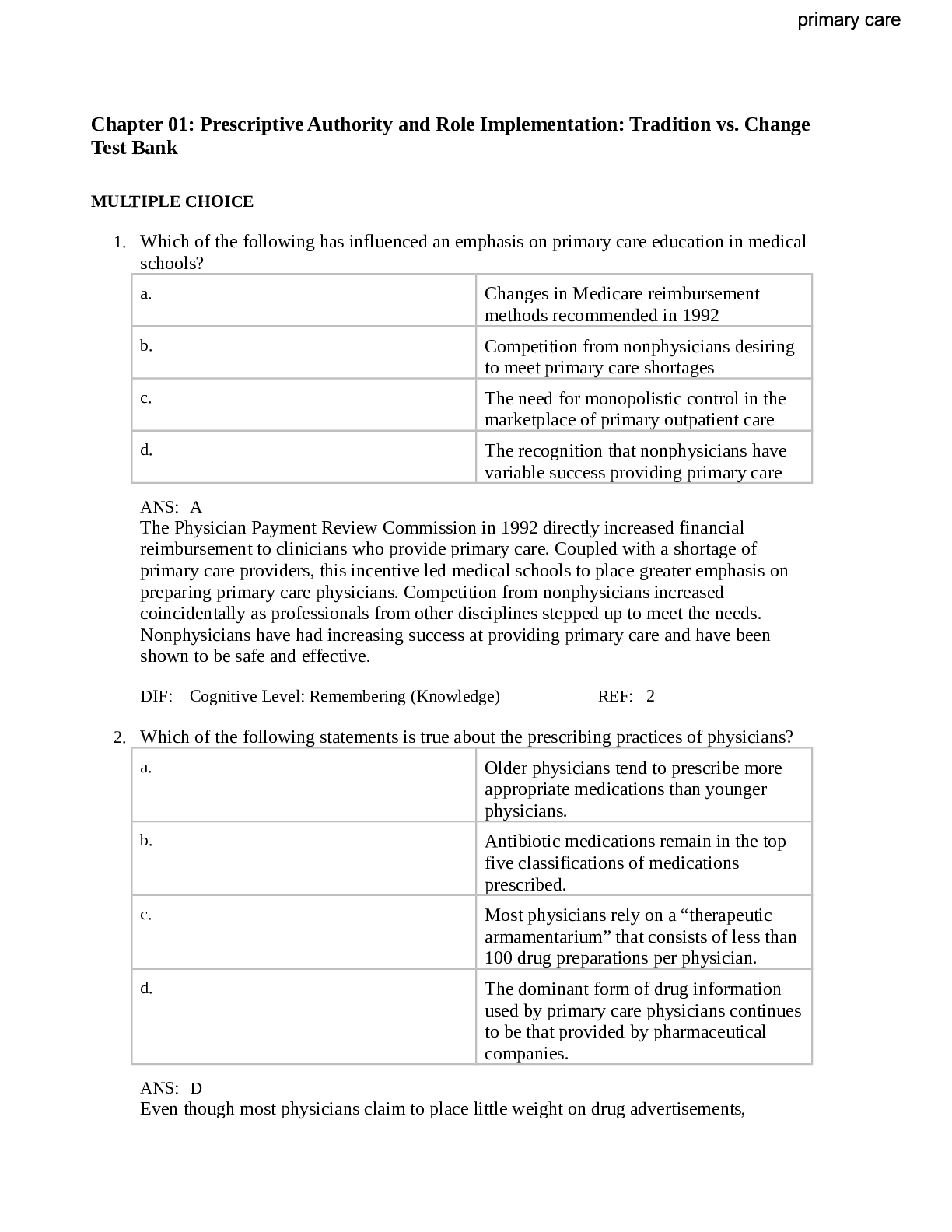
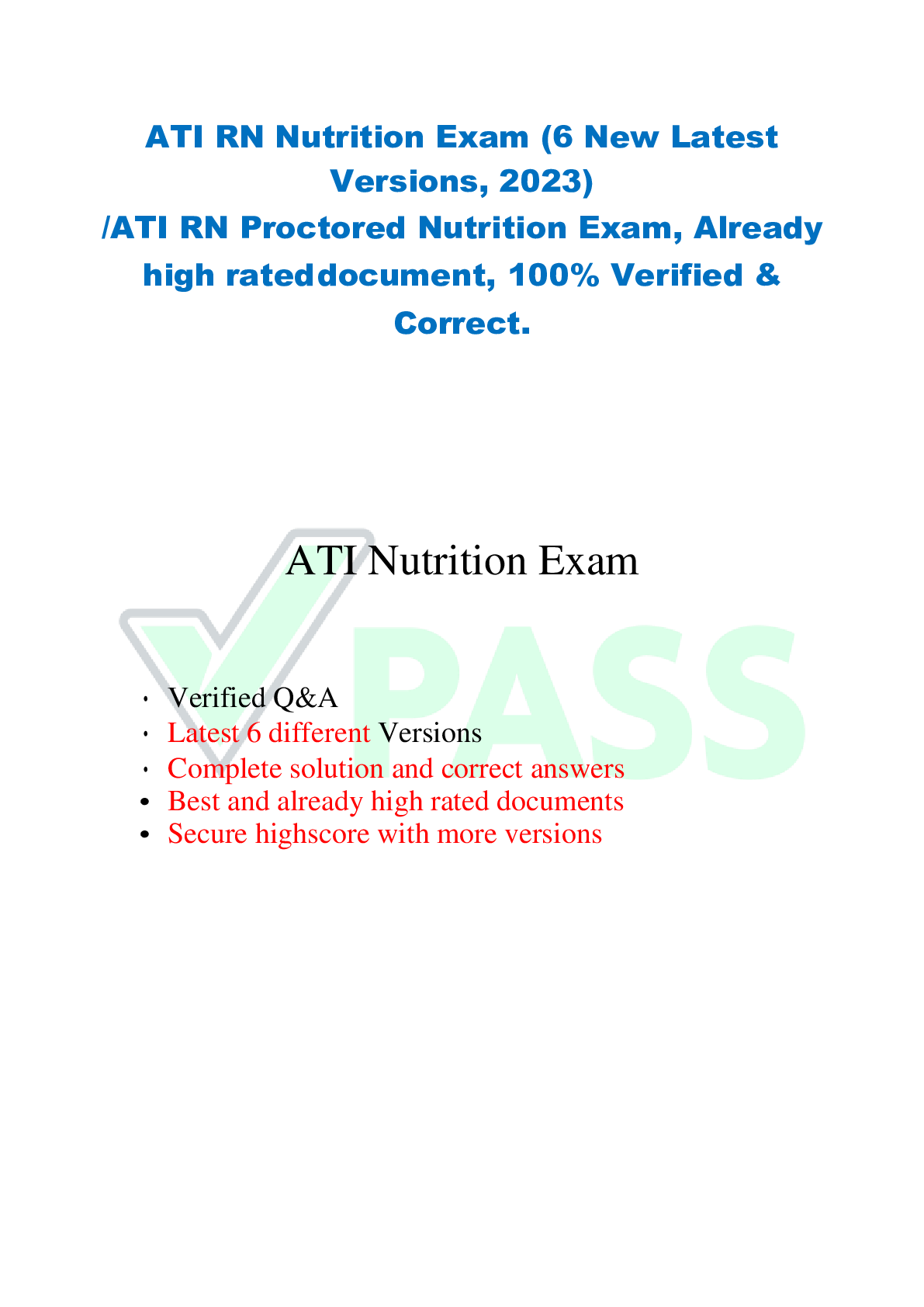
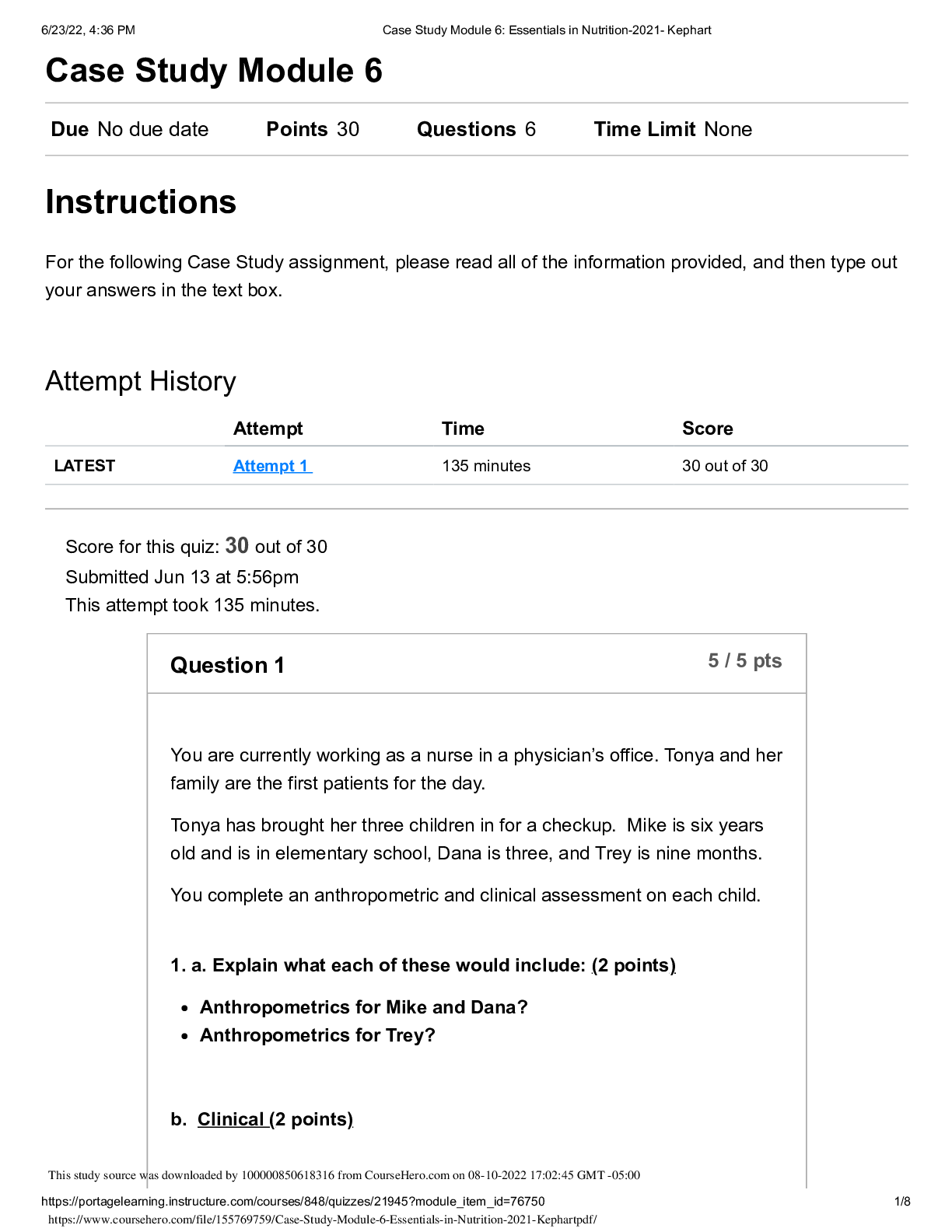
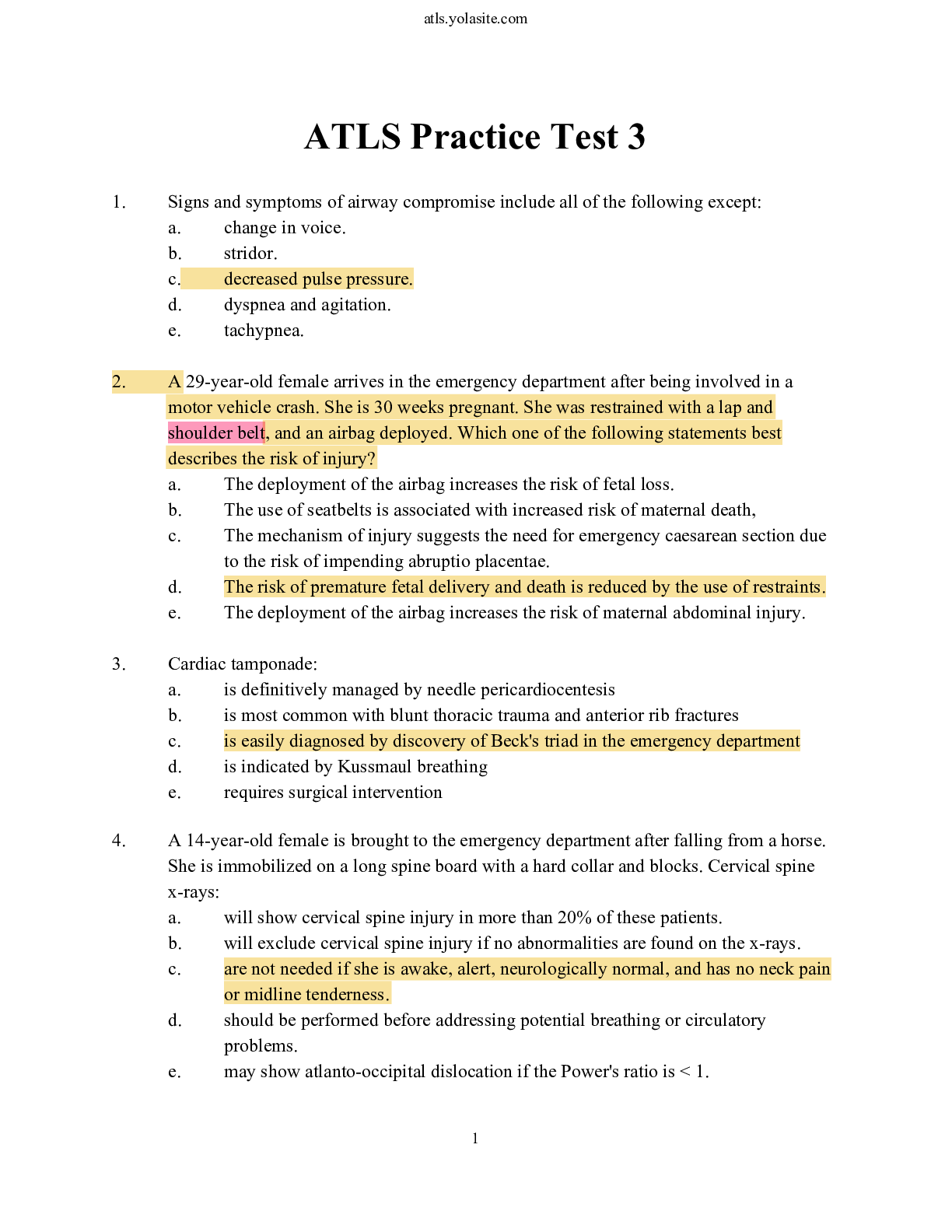
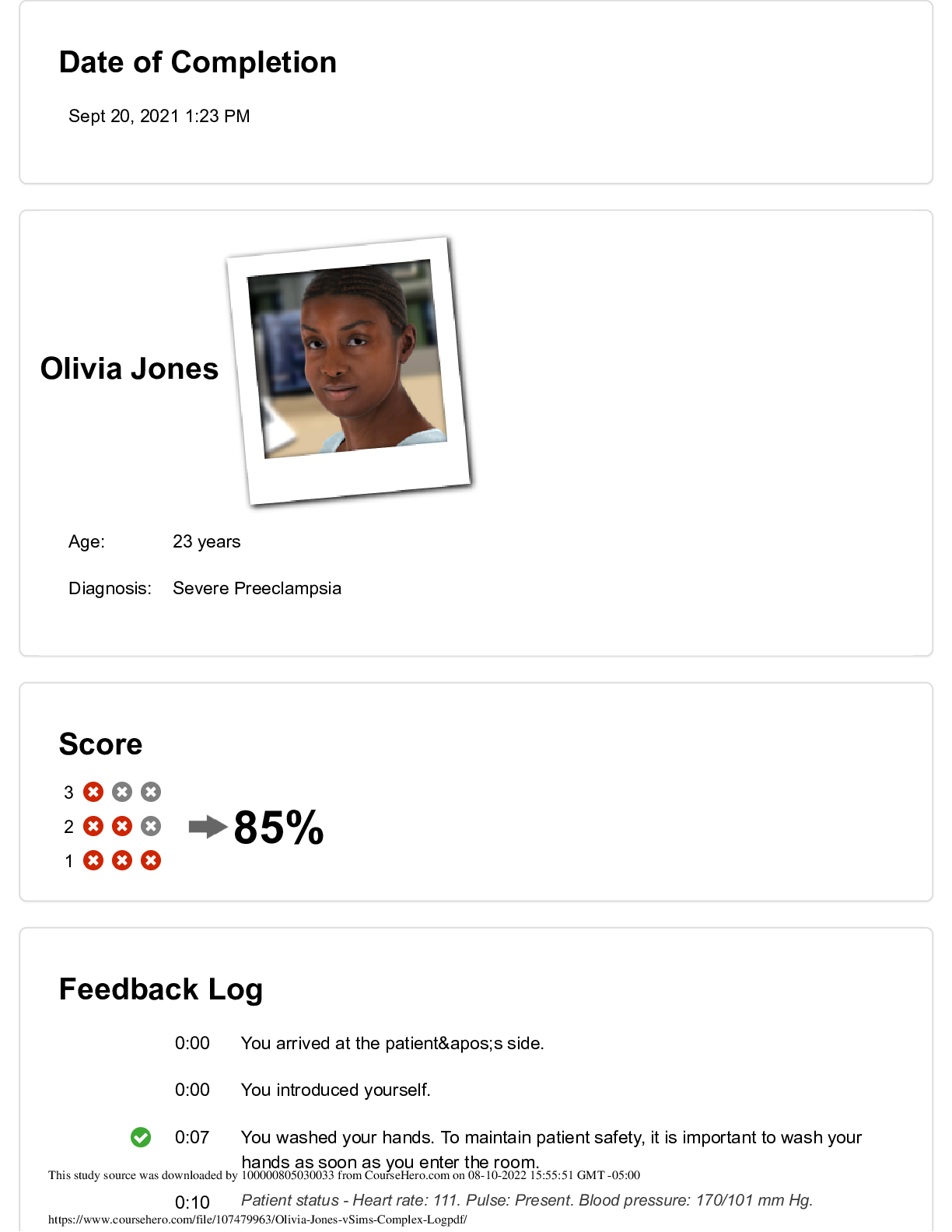
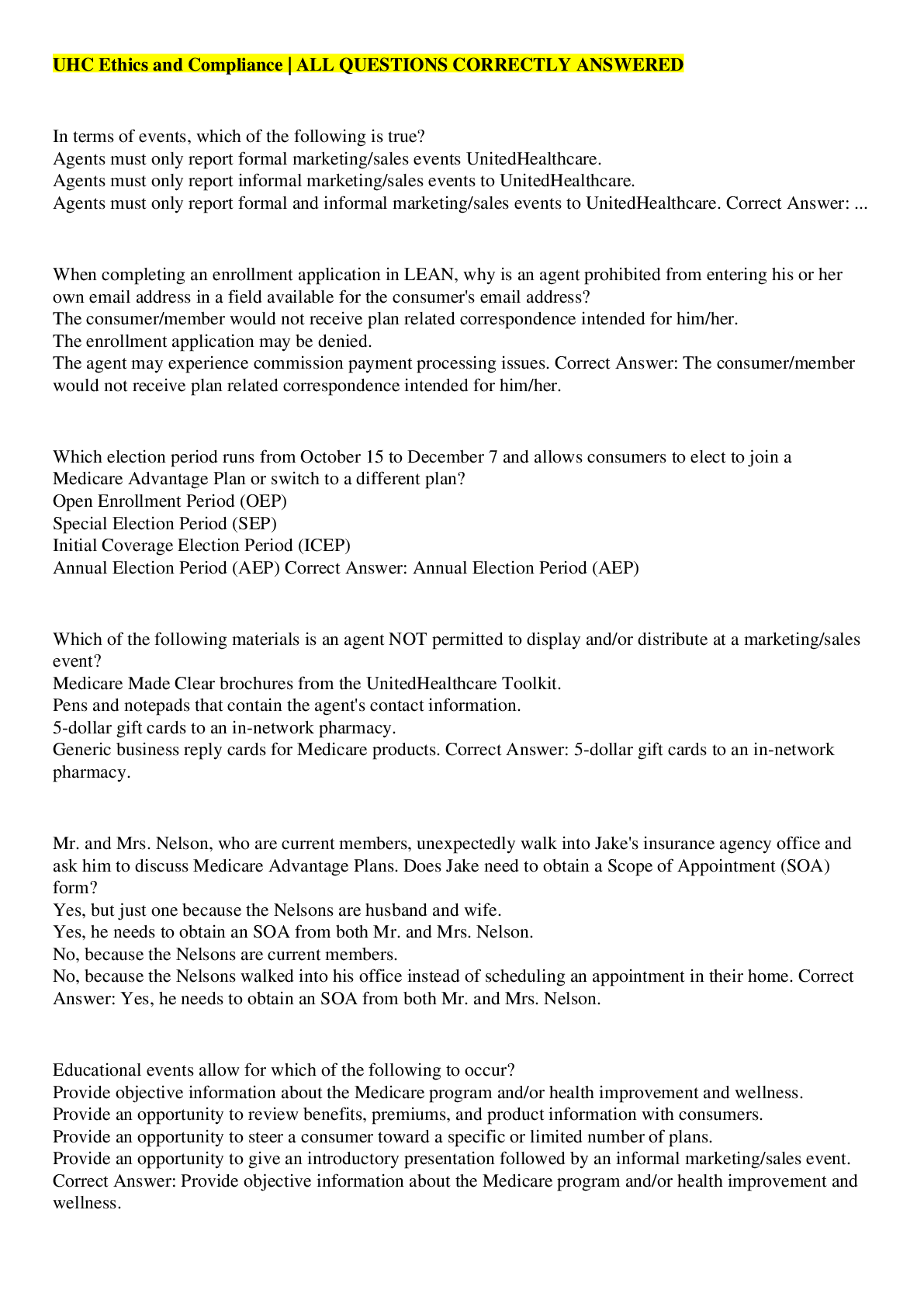

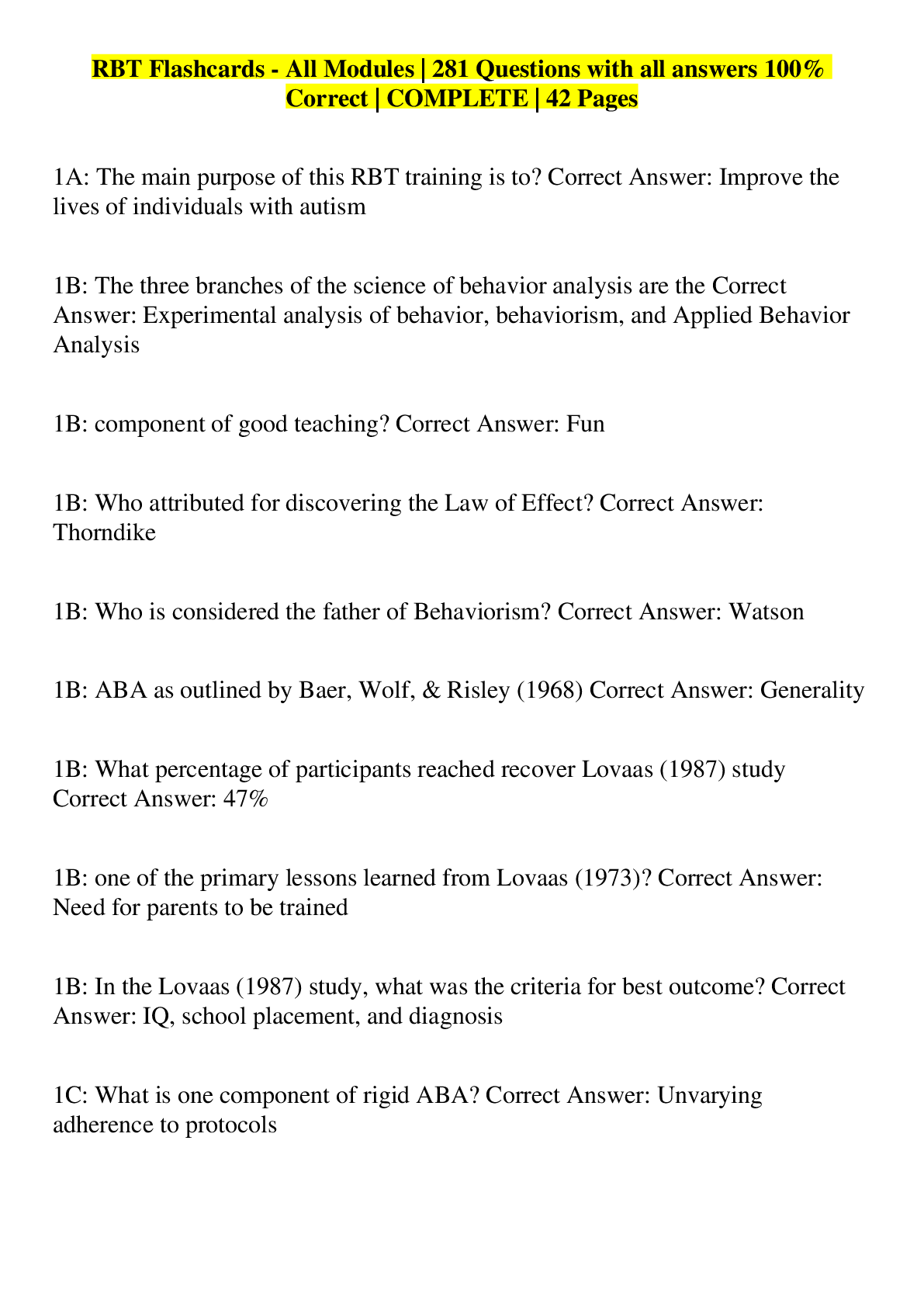
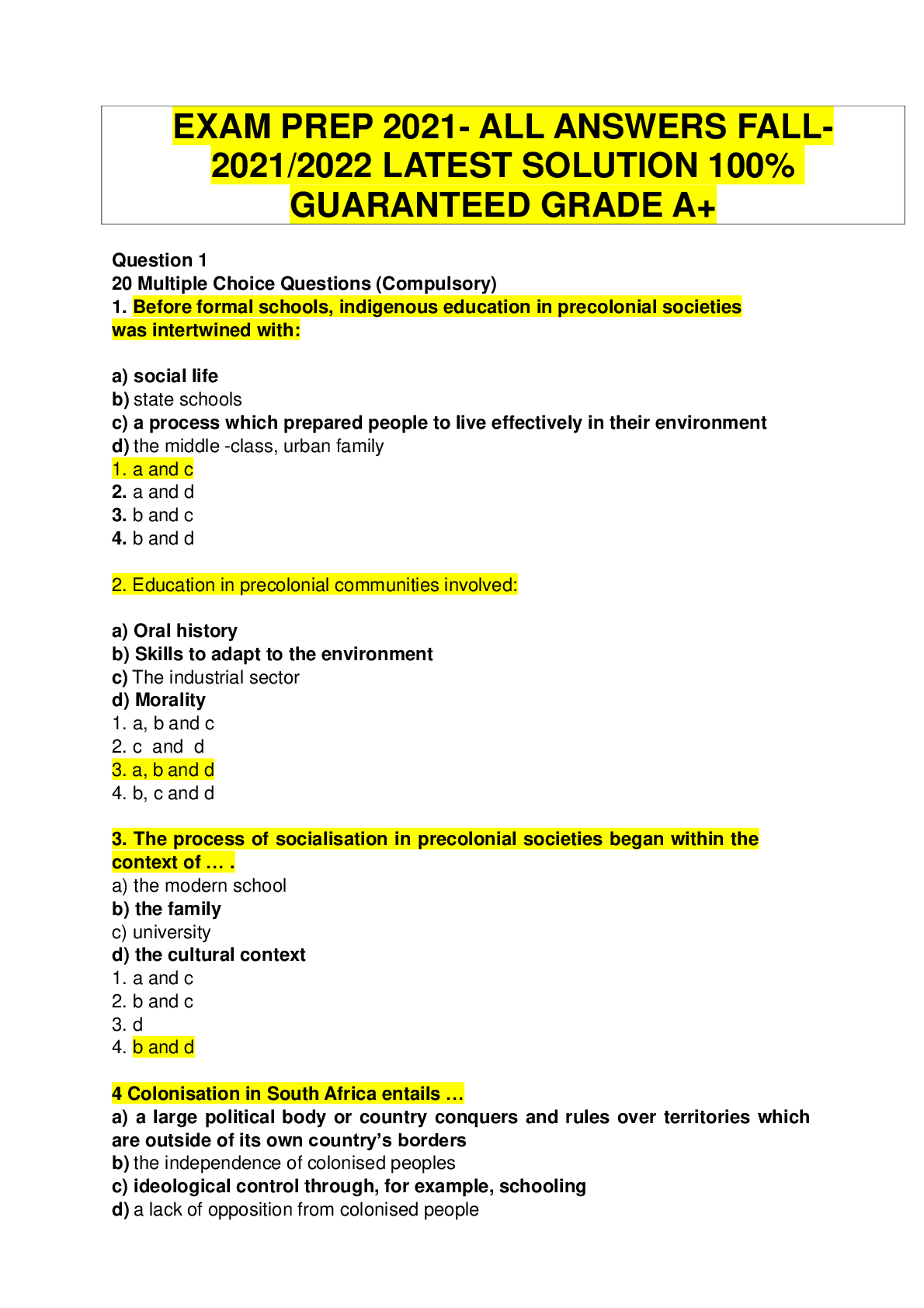
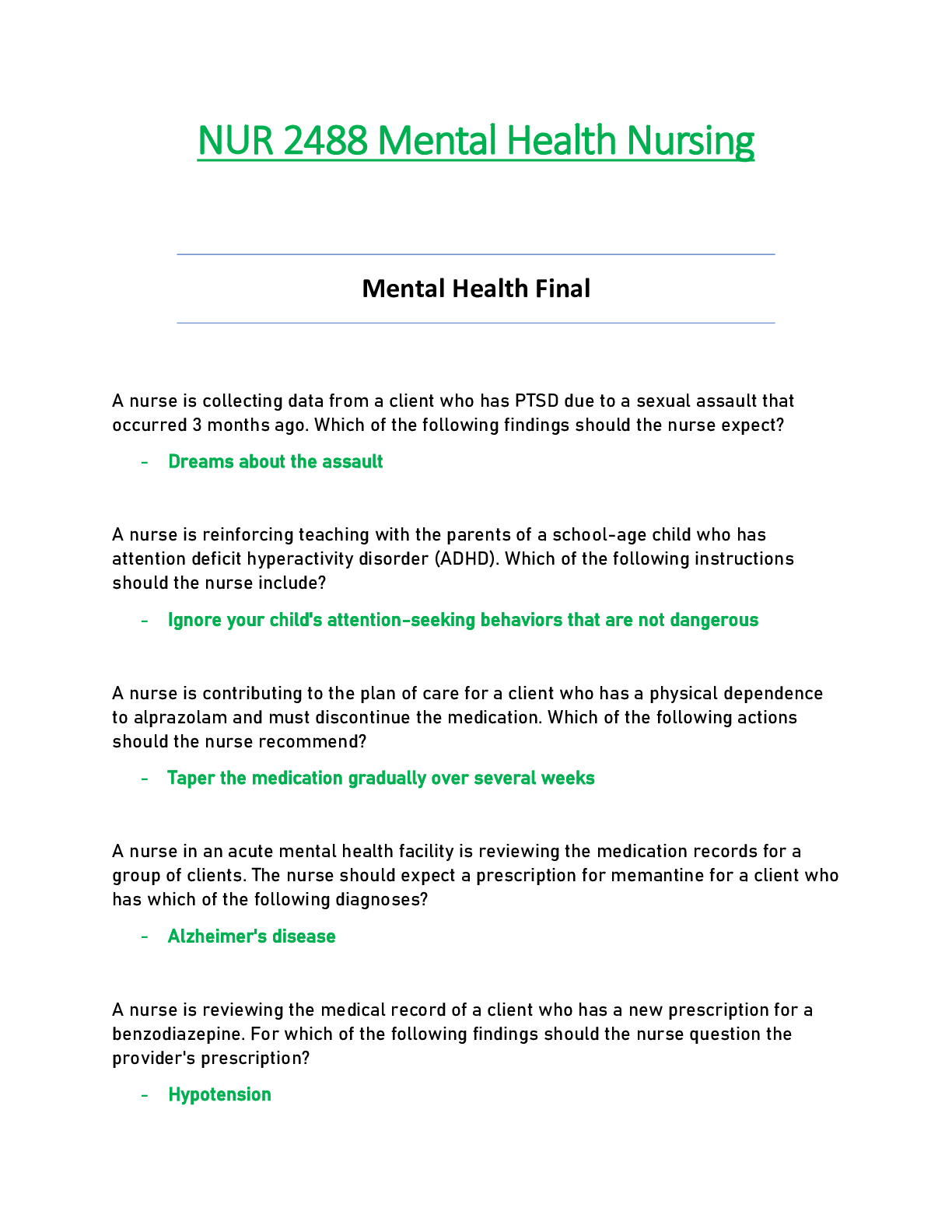
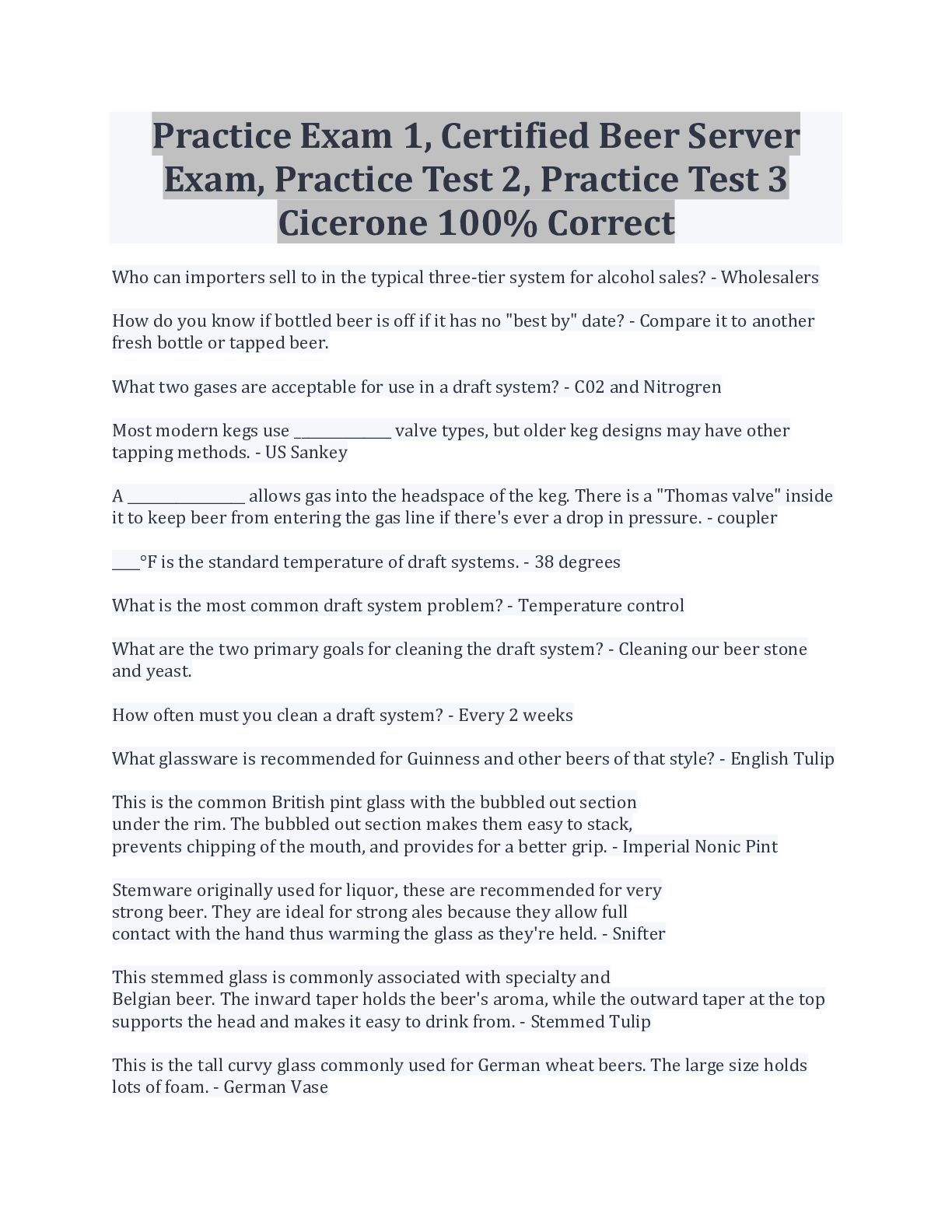
.png)
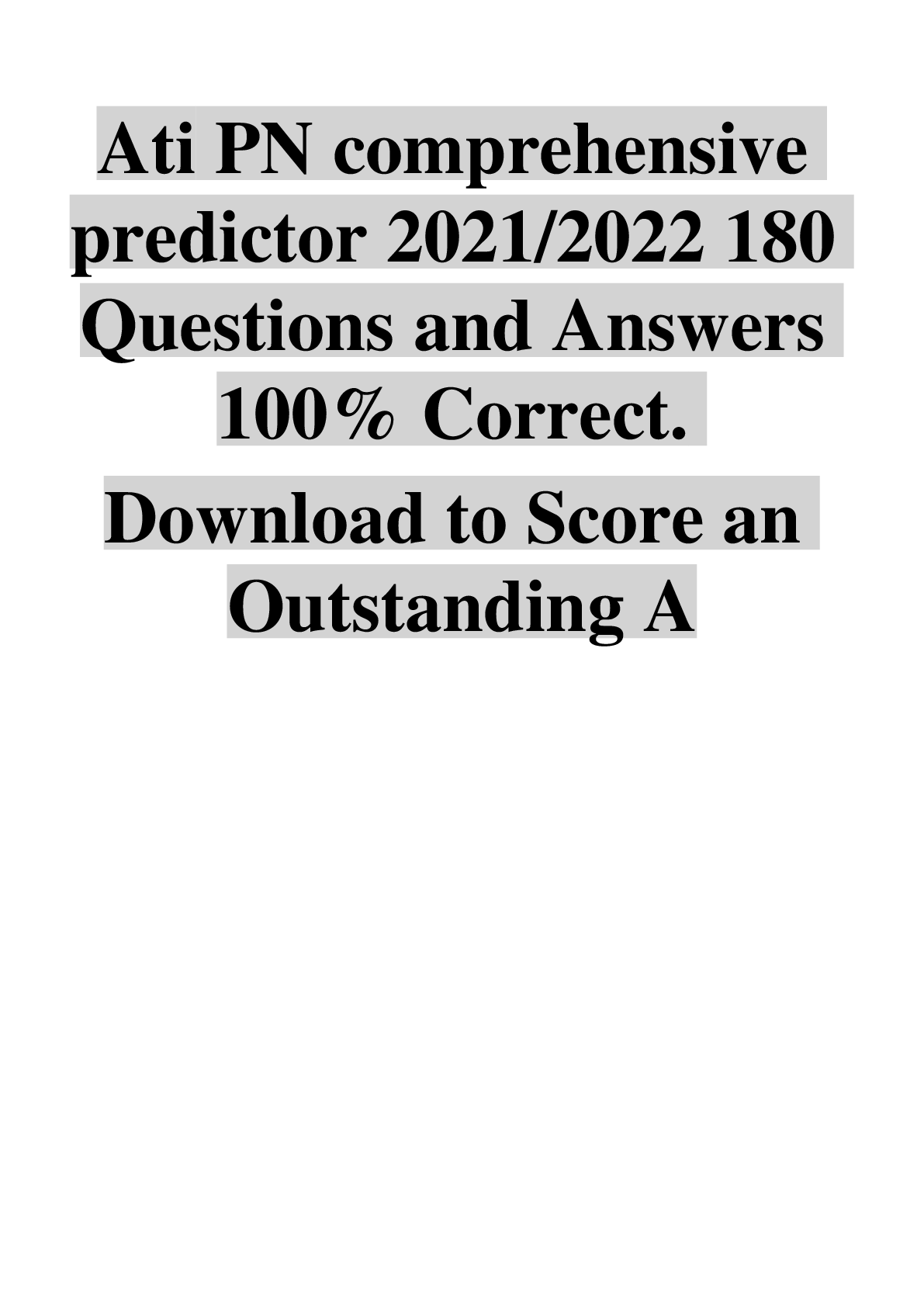
.png)
.png)
